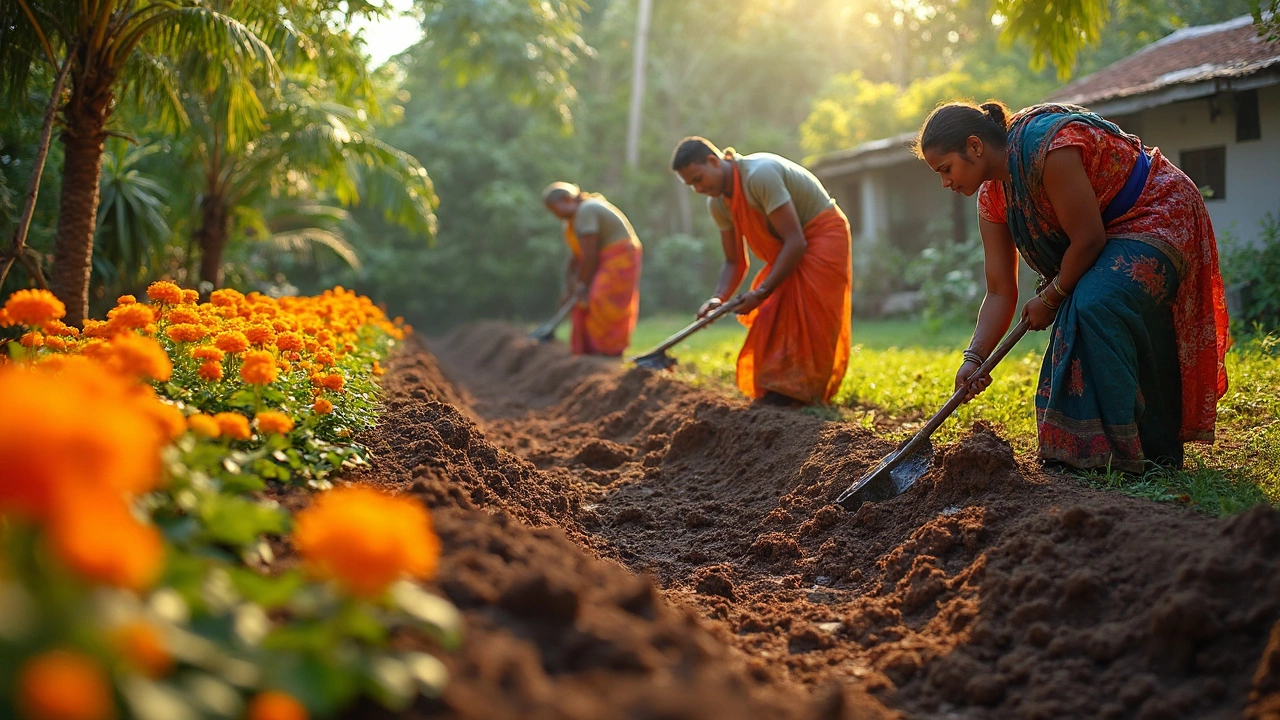Curious about which tool can help you remove the top layer of soil fast, safely, and efficiently? This guide digs deep into the best tools for stripping away topsoil, from manual spades to modern machines. Explore pro tips, clever techniques, and real-world examples from gardens and construction sites. Learn which tool might save you hours of work—or give you a new appreciation for a classic shovel. Get the information you need to pick the right soil removal tool for your project.
Rototiller: What It Is, How It Works, and When to Use It in Indian Gardens
When you're dealing with hard, compacted soil—common in many parts of India—a rototiller, a motorized tool that churns and breaks up soil for planting. Also known as a garden tiller, it saves hours of backbreaking work and turns barren ground into ready-to-plant beds. Unlike hand forks or hoes, a rototiller digs deep, mixes in compost or manure evenly, and leaves behind loose, airy soil that roots love.
It’s not just for big farms. Even small-scale gardeners in Delhi, Pune, or Bangalore use rototillers to prep balcony garden beds, kitchen garden plots, or community farm patches. If your soil is clay-heavy, packed down by foot traffic, or full of weeds, a rototiller cuts through it like butter. It’s especially useful before planting fast-growing crops like okra, spinach, or tomatoes—anything that needs loose, well-aerated soil to thrive. The machine doesn’t just dig; it aerates. Roots breathe better. Water drains faster. Fertilizer spreads evenly. And weeds? They get chopped up and buried.
But it’s not magic. A rototiller, a motorized tool that churns and breaks up soil for planting. Also known as a garden tiller, it saves hours of backbreaking work and turns barren ground into ready-to-plant beds. isn’t for every job. Don’t use it on newly seeded areas or around delicate plants—it’ll tear up roots. Avoid using it in wet soil; it turns to mud and cakes the blades. And if you’re working in a tiny balcony container garden, skip it. A hand trowel does the job better. But for any patch of land bigger than 10x10 feet—especially if it’s been neglected for a season—a rototiller is one of the smartest tools you can own.
Many of the posts below talk about improving soil, fixing dense earth, and making gardening easier. That’s exactly what a rototiller does. Whether you’re reading about composting for clay soil, choosing the right garden tools, or prepping land for year-round flowering plants, the rototiller is often the first step. It’s the unsung hero behind healthy tomato beds, weed-free vegetable patches, and rich, crumbly soil that makes compost work better. You won’t find it in every gardening guide—but once you use one, you’ll wonder how you ever managed without it.
Below, you’ll find real-life tips from Indian gardeners who’ve used rototillers to turn tough soil into thriving gardens. Some show how to pair it with organic amendments. Others warn about common mistakes. You’ll see how it fits into seasonal prep, how to choose a model that fits your plot size, and why some farmers swear by it while others avoid it. No fluff. Just what works.
